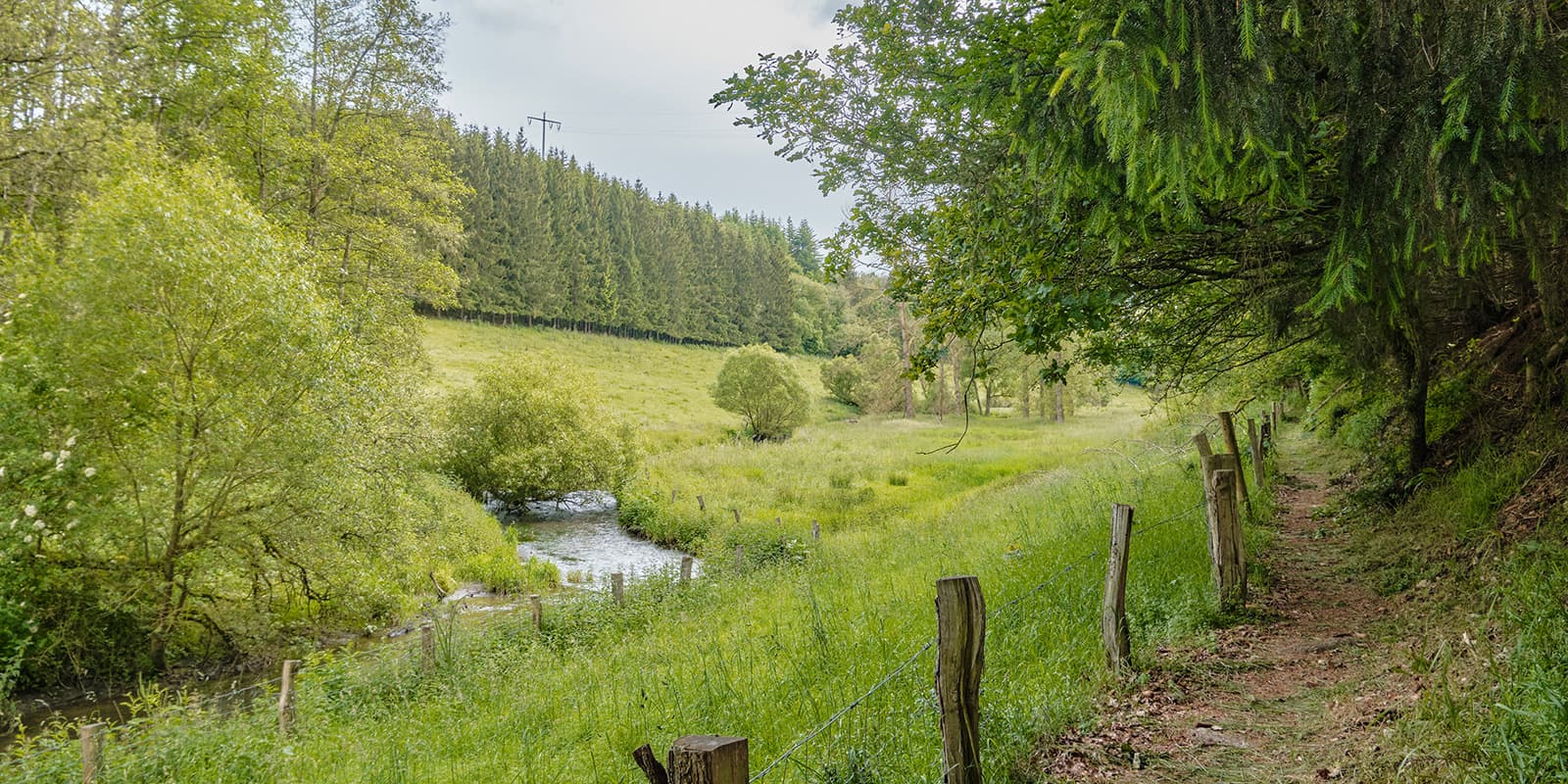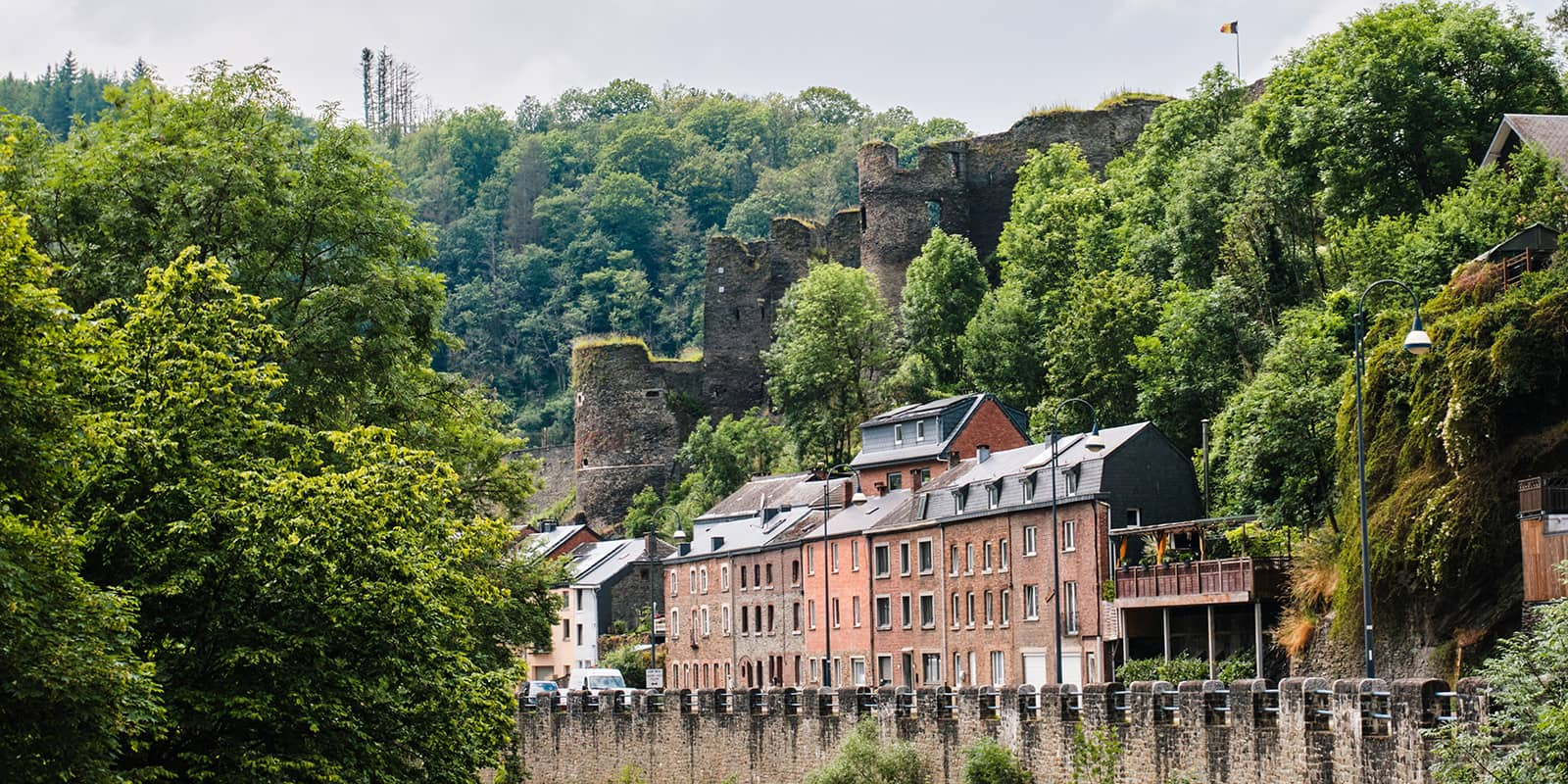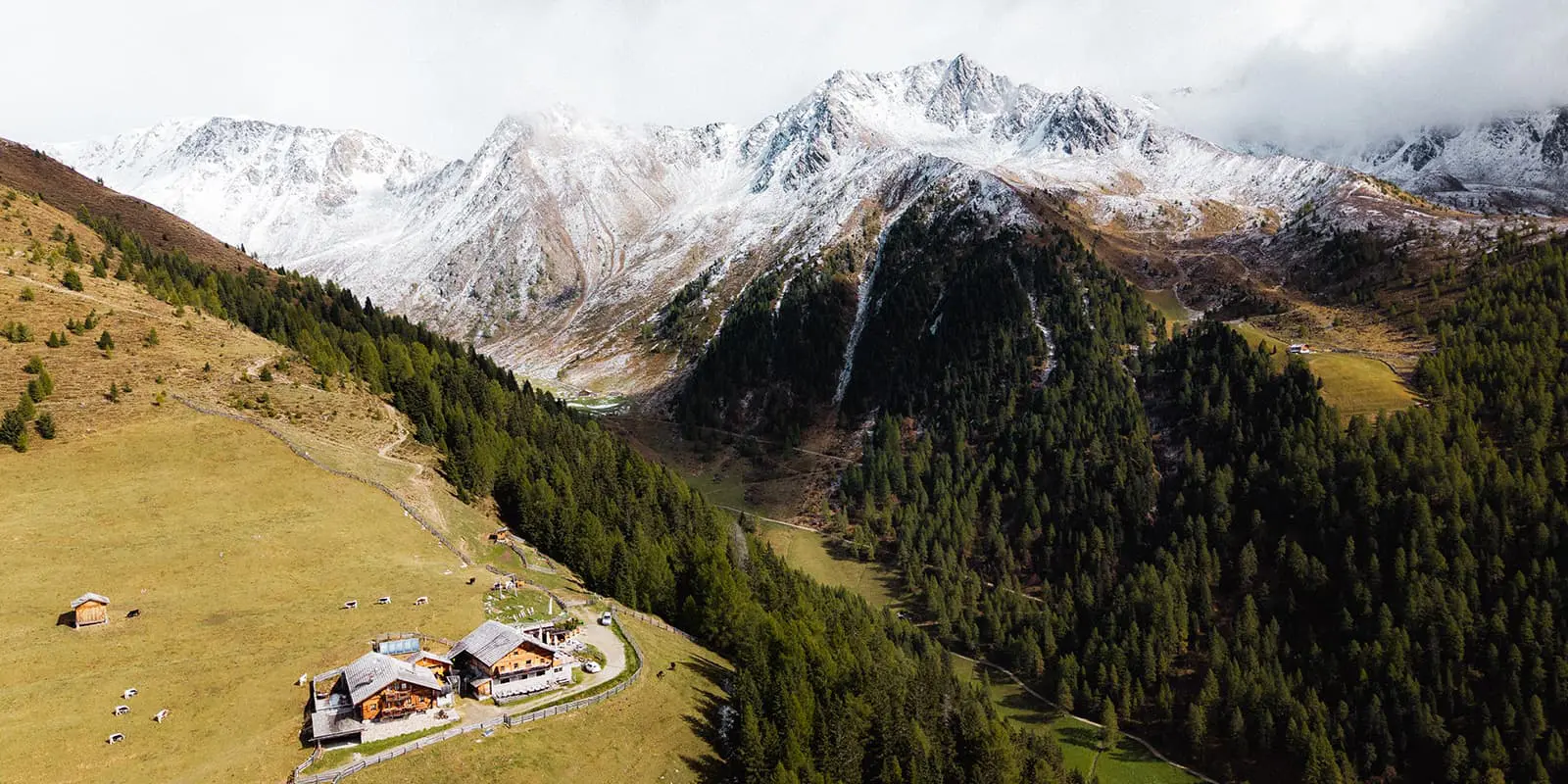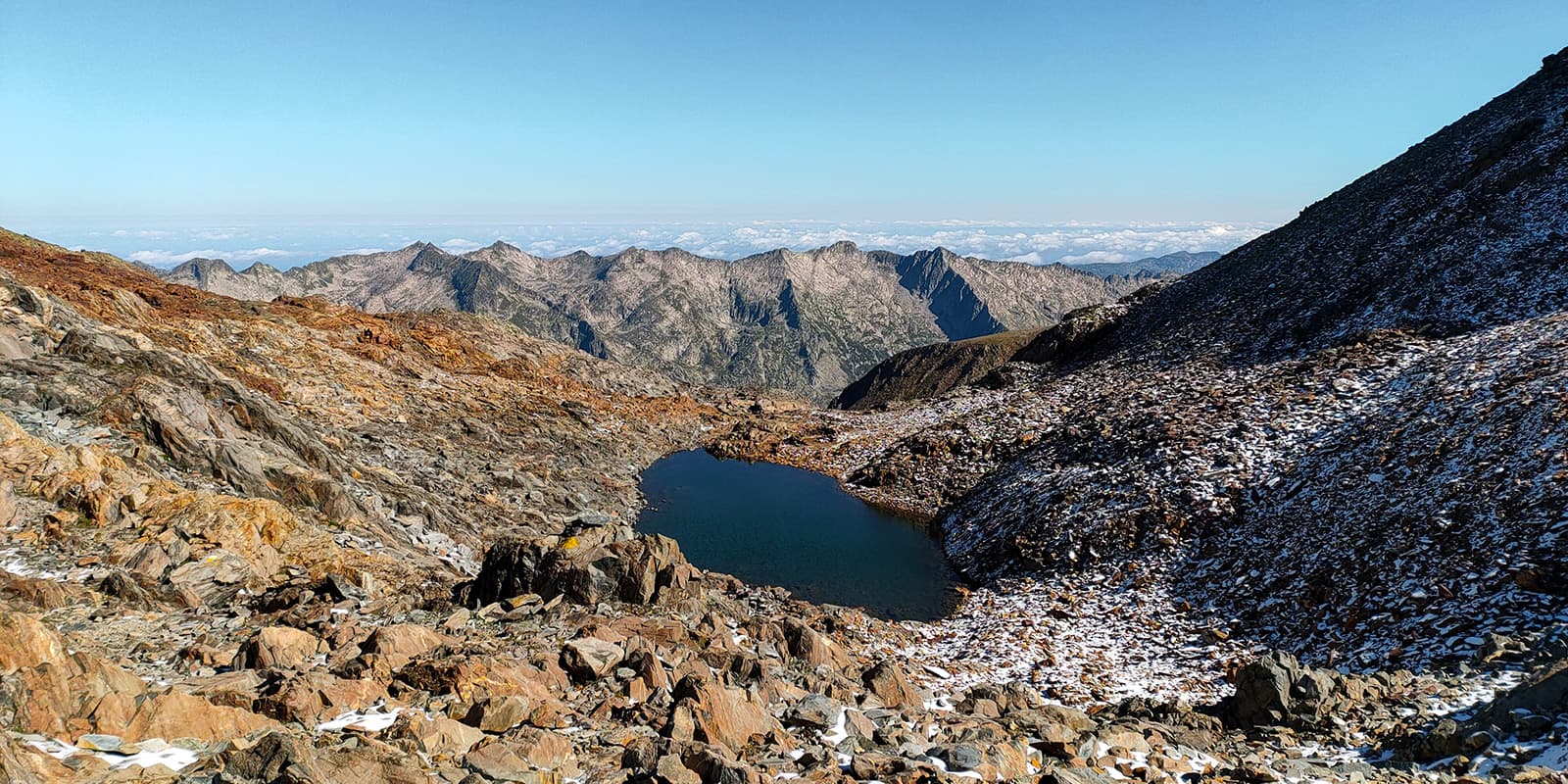Starting at Kautenbach in Luxembourg and ending in La Roche-en-Ardenne in Belgium, this route doesn’t only cross borders but also passes through an astonishing amount of 30 nature reserves, 45 unique viewpoints, three cities, and 19 villages. And this whilst following 60% unpaved and natural trails.
The trailhead is located in Kautenbach. Due to its train station, it is easy to reach by public transport. However, one can hike the Eislek Trail in both directions. The trail leaves Kautenbach by taking a small and steep unpaved path that was once a path to transport cattle. The trail provides you with a breathtaking view of the valley of Wiltz before descending back to the campsite of Kautenbach.
From there, the trail takes the ‘Kriibsewee’ or ‘Lobster way’ up to the castle of Schibberech. This oddly named path is based on a story that dates back to 1748. It’s said that the owner of the castle caught two farmers catching lobsters in its river. As punishment, they had to carve this eastern path to the castle into the hillside.
After passing Lellingen and Enscherange, also known as the center of Luxembourg (which ironically is not the center of Luxembourg), the path runs through some dense forests before passing the intersection to Munshausen. This typical medieval village is well-worth a visit. Running along the hilltop, the trail treats you with a beautiful sight of the Abbey of Clervaux right before entering the city.
Following a train line, the path leaves Clervaux again to enter the lush forest of ‘Beischend.’ There’s a folklore saying that the villagers of a town that was once located in this forest, are still looking after their houses there. On the highest point of the forest, there is a stone cairn. When descending, the trail passes an airplane wreck that was downed in World War II.
After a few kilometers the trail, once again, passes a World War II memorial: an old monastery that was used as a ‘residency’ for Jewish people. A tragic history that got its own memorial on the site that is now used as an education center.
Right after, the trail ascends and descends again, before getting a clear view of the church tower of Troisvierges. The path doesn’t enter the city but runs along the river and takes you to the watermills of Tretterbach. There used to be more than 10 watermills along the river but only 5 ruins remain. At the watermill of Asselborn, you can stop for dinner, a good night’s sleep, a shop with some local products, and even some first-aid products for hikers.















